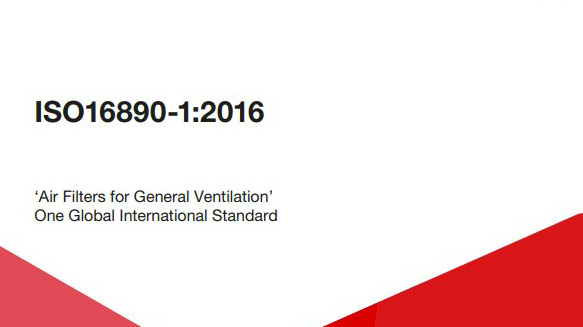ISO 16890-1:2016 is THE global international standard for ‘Air Filters for General Ventilation’.
It became effective on December 1, 2016, and is still the overriding standard that everyone who has an air filter on their premises needs to look to.
It’s an efficiency classification system of air filters, for general ventilation, based upon particulate matter (PM). It, therefore, makes it easier for users to pick the right air filter for them – based on their needs and actual operating environment.
It also provides an overview of the test procedures and specifies general requirements for assessing and marking filters, as well as for documenting test results.
It’s intended for use in conjunction with ISO 16890 2, ISO 16890 3 and ISO 16890 4.
The details
ISO 16890-1:2016 addresses many issues by creating a process that is simpler and easier to duplicate, with fewer steps. It uses real-world applicable information and shows actual discernible differences between ratings.
Why was ISO 16890 introduced?
The ISO16890 test method shifted the focus on filtration performance to the classes of particulate matter size (PM) and is, therefore, a much more realistic test criteria than the previously used and theoretical EN779:2012, so this standard replaces G4, M5, F7 etc.
So, what’s important about this standard?
This means that with ISO 16890, standard filter efficiencies are determined based on particulate matter size classes PM1, PM2.5 and PM10, which are also used as evaluation parameters by the WHO (World Health Organisation) and other authorities.
Founded on these parameters, it is easier for users to select the right air filter based on their requirements and actual operating conditions are more effectively taken into account.
It’s all about particle size
Instead of considering only the particle size 0.4 microns (EN779:2012), as previously, a broad range between 0.3 microns and 10 microns is now used to determine separation efficiencies for particulate matter fractions PM1, PM2.5, PM10.
For coarse filters, the ISO 16890 standard includes filters that capture less than 50% of particles in the PM10 range – these are known as ‘ISO Coarse’ and detail their PM10 performance i.e., ‘PM Coarse 45%’.
According to the standard, filters are divided into four groups. A prerequisite for each group is that a filter captures at least 50% of the appropriate particle size range.
If a filter, for example, captures more than 50% of PM1 particles, it’s grouped as an ISO 16890 ePM1 filter.


